
The Royal Regiment of Artillery, commonly referred to as the Royal Artillery (RA) and colloquially known as "The Gunners", is one of two regiments that make up the artillery arm of the British Army. The Royal Regiment of Artillery comprises thirteen Regular Army regiments, the King's Troop Royal Horse Artillery and five Army Reserve regiments.

The Royal Corps of Signals is one of the combat support arms of the British Army. Signals units are among the first into action, providing the battlefield communications and information systems essential to all operations. Royal Signals units provide the full telecommunications infrastructure for the Army wherever they operate in the world. The Corps has its own engineers, logistics experts and systems operators to run radio and area networks in the field. It is responsible for installing, maintaining and operating all types of telecommunications equipment and information systems, providing command support to commanders and their headquarters, and conducting electronic warfare against enemy communications.

16 Air Assault Brigade Combat Team, from 1999 to 2021 16 Air Assault Brigade, is a formation of the British Army based in Colchester in the county of Essex. It is the Army's rapid response airborne formation and is the only brigade in the British Army focused on delivering air assault operations.

Cavalry Barracks is a former British Army installation located north of Hounslow Heath in Hounslow, west London. Hounslow was one of 40 new barracks established around the country in the wake of the French Revolution, to guard against the dual threats of foreign invasion and domestic sedition. The barracks later became a busy depot for the London military district. The barracks have been described by Historic England as 'one of the most significant and complete barracks in the country'; as of June 2021 the site is scheduled to be developed as a sustainable living project by Hounslow Council.
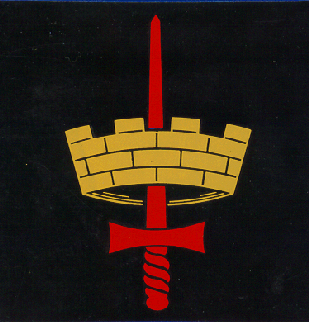
London District (LONDIST) is the name given by the British Army to the area of operations encompassing the Greater London area. It was established in 1870 as Home District.

Collins Barracks is a military barracks on the Old Youghal Road on the north side of Cork in Ireland. Originally serving as a British military barracks from the early 19th century, it was handed-over to the Irish military following the Irish War of Independence, and remains the headquarters of the 1st Brigade of the Irish Army. A museum in the barracks is open to the public at selected times.

The Royal Irish Regiment, until 1881 the 18th Regiment of Foot, was an infantry regiment of the line in the British Army, first raised in 1684. Also known as the 18th Regiment of Foot and the 18th Regiment of Foot, it was one of eight Irish regiments raised largely in Ireland, its home depot in Clonmel. It saw service for two and a half centuries before being disbanded with the Partition of Ireland following establishment of the independent Irish Free State in 1922 when the five regiments that had their traditional recruiting grounds in the counties of the new state were disbanded.

Colchester Garrison is a major garrison located in Colchester in the county of Essex, Eastern England. It has been an important military base since the Roman era. The first permanent military garrison in Colchester was established by Legio XX Valeria Victrix in AD 43 following the Roman conquest of Britain. Colchester was an important garrison town during the Napoleonic Wars and throughout the Victorian era. During the First World War several battalions of Kitchener's Army were trained there. Now, 2nd Battalion and 3rd Battalion of The Parachute Regiment are based there. Today there are new barracks, which, in replacing the Victorian buildings, have made available building land slightly nearer the town centre.
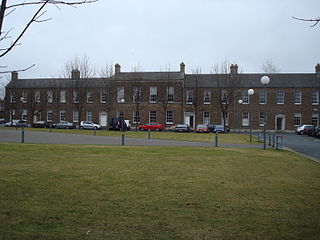
Beggars Bush is the site of the former Beggars Bush Barracks on Haddington Road in the inner southern suburbs of Dublin, Ireland, as well the surrounding area and a nearby pub. The barracks were bordered to the east by Shelbourne Road, which used to be the western bank of the River Dodder. The locality is in the jurisdiction of Dublin City Council, is broadly considered to be part of Ballsbridge, and is in the postal district Dublin 4.
11 Explosive Ordnance Disposal and Search Regiment RLC is a specialist regiment of the British Army's Royal Logistic Corps (RLC) responsible for counter terrorist Explosive Ordnance Disposal (EOD), the safe recovery or disposal of conventional munitions. The regiment also has an ammunition inspectorate role supporting the Inspector Explosives (Army). With headquarters in Didcot, the regiment has sub units geographically based throughout the UK to provide a nationwide high readiness response capability in support of the police.

HQ Northern Ireland was the formation responsible for the British Army in and around Northern Ireland. It was established in 1922 and disbanded, replaced by a brigade-level Army Reserve formation, 38 (Irish) Brigade, in 2009.
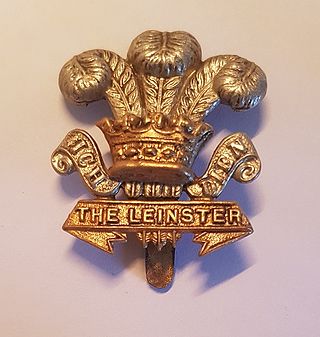
The Prince of Wales's Leinster Regiment (Royal Canadians) was an infantry regiment of the line in the British Army, formed in 1881 by the amalgamation of the 100th (Prince of Wales's Royal Canadian) Regiment of Foot and the 109th Regiment of Foot (Bombay Infantry). The 100th Foot was first raised in 1858 and the 109th was first raised in 1853. Between the time of its formation and Irish independence, it was one of eight Irish regiments raised largely in Ireland, with its Birr Barracks home depot in Birr. It was disbanded with the Partition of Ireland following establishment of the independent Irish Free State in 1922 when the five regiments that had their traditional recruiting grounds in the counties of the new state were disbanded.
The 58th (Rutlandshire) Regiment of Foot was a British Army line infantry regiment, raised in 1755. Under the Childers Reforms it amalgamated with the 48th (Northamptonshire) Regiment of Foot to form the Northamptonshire Regiment in 1881.
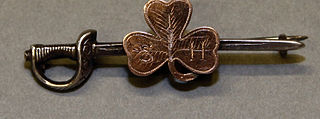
The South Irish Horse was a Special Reserve cavalry regiment of the British Army. Formed as an Imperial Yeomanry regiment in 1902 as the South of Ireland Imperial Yeomanry, it perpetuated a unit formed during the Second Boer War. It transferred to the Special Reserve (Cavalry) in 1908 and was renamed as the South Irish Horse. Having taken part in the fighting of World War I, it was disbanded after Irish Independence in 1922.
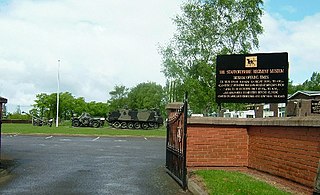
DMS Whittington, otherwise known as Defence Medical Services Whittington, is a military base in Whittington, Staffordshire, near Lichfield in England. It is home to the Staffordshire Regiment Museum, the Headquarters of the Surgeon General and subordinate medical headquarters, and the location of the Defence College of Health Education and Training.

The 1st Signal Brigade, formerly known as the 1st Signal Group, is a brigade of the British Army. The group was first formed in 1968 as a result of the 1966 Defence White Paper which expanded support for NATO and the British Army of the Rhine. In 1987, the group was disbanded and merged into the 2nd Signal Brigade. In 1995, the brigade was reformed and has since deployed on operations across the globe in support of NATO and HQ Allied Rapid Reaction Corps.
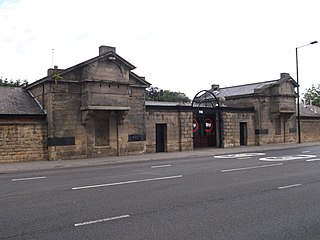
Fenham Barracks is a military installation in Barrack Road, Newcastle upon Tyne, Tyne and Wear, England.
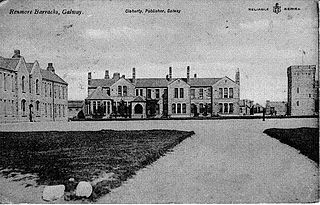
Renmore Barracks is a military installation in Renmore, Ireland
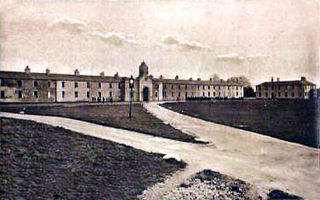
Ballymullen Barracks is an Irish military installation at Tralee, County Kerry in Ireland.

The structure of the British Army is being reorganised to the Future Soldier structure. The Army is commanded by the Chief of the General Staff (CGS), with Army Headquarters which is located in Andover, Hampshire. Subordinate to that post, there is a Commander Field Army, and a personnel and UK operations command, Home Command.



















